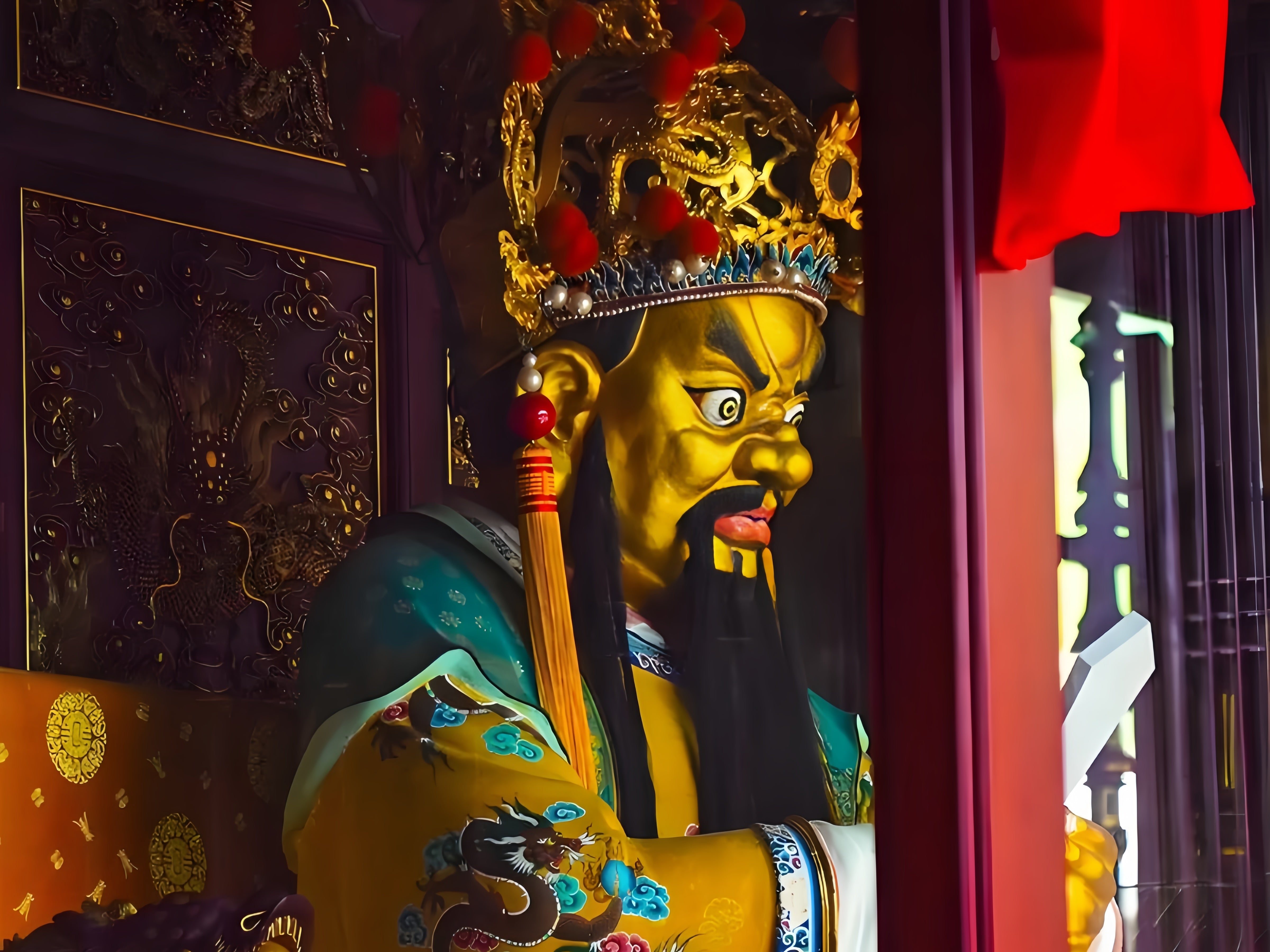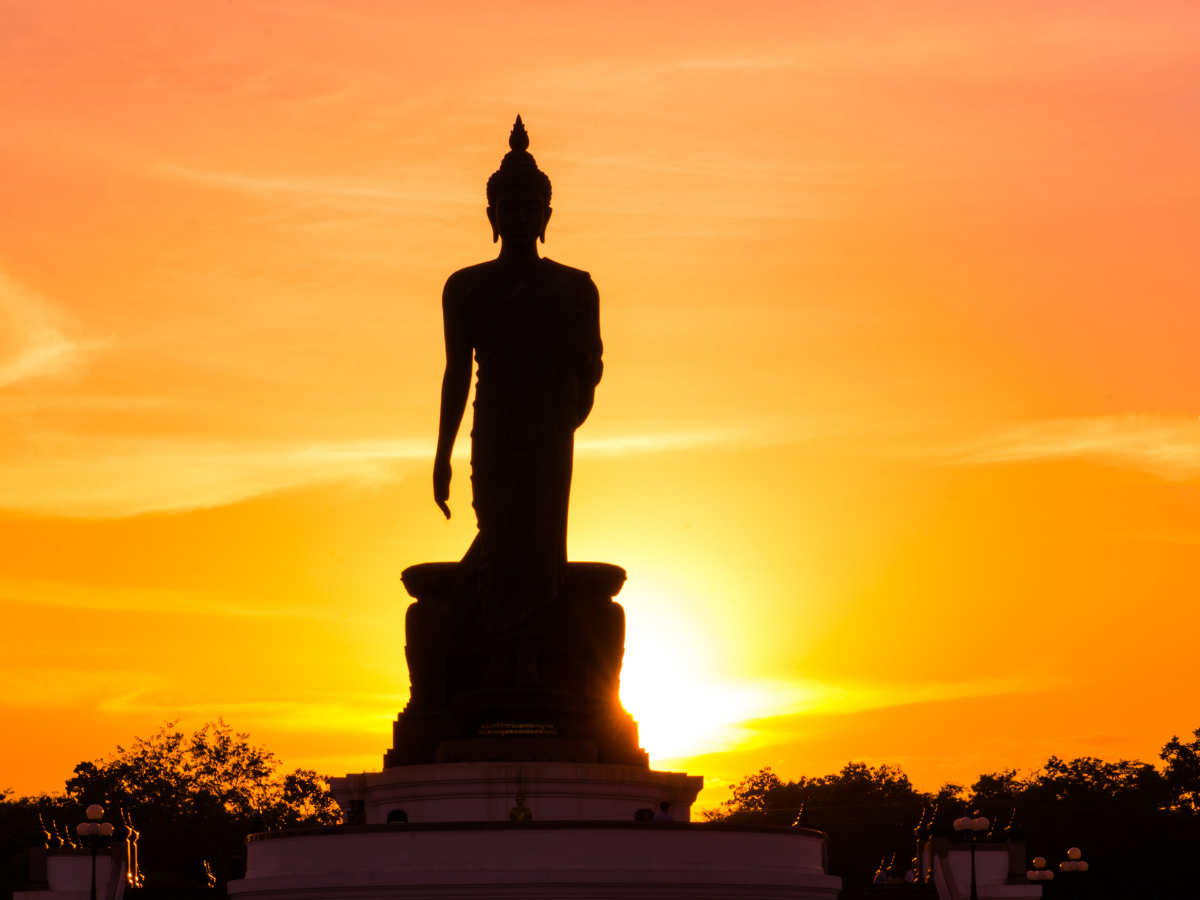Welcome to the enchanting realm of Thangka art, where each painting is not just an artwork but a portal into Buddhism's spiritual and cultural tapestry. In my latest exploration, "The Sacred Art of Thangka: Bridging Buddhism and Cultural Heritage," I dive deep into the origins of Thangka painting, tracing its roots back through centuries of Buddhist tradition.
Join me as I uncover the rich symbolism embedded in Thangka art, where every color, motif, and figure carries profound spiritual meanings. I’ll share how these artworks serve not just as visual delights but as vital tools for meditation and spiritual enlightenment, deeply intertwined with the practice of Buddhism.
I also take you behind the scenes to reveal the meticulous craftsmanship that goes into creating a Thangka. From preparing the canvas to the intricate application of paint, each step is a meditative practice performed with deep reverence by skilled artisans.
We'll also explore the roles of iconic figures and deities depicted in Thangka, understanding their significance within Buddhist mythology and their importance to practitioners. As we look at how Thangka art is preserved and celebrated today, I'll discuss its significance in modern decor and its role as a cultural ambassador, bridging the gap between ancient traditions and contemporary life.
Finally, we'll consider the innovations keeping Thangka art vibrant and relevant in the modern world. So, let’s embark on this colorful journey together, exploring how Thangka continues to inspire and enlighten across the globe.

The Origins of Thangka Painting
Thangka painting has its roots deeply embedded in the Buddhist traditions of Nepal, Tibet, and India, dating back to around the 7th and 12th centuries. Originally, these paintings were not merely artistic expressions but served as important teaching tools that illustrated the life of Buddha, various influential lamas, and other deities and bodhisattvas. Over centuries, Thangka became an essential element of meditation practices, helping practitioners visualize divine figures in their quest for enlightenment.

Symbolism in Thangka Art
Each element in a Thangka painting is rich with symbolism and meaning. The colors, shapes, and arrangement of figures are all deliberate and convey specific teachings or concepts. For example, blue can represent tranquility or infinity, while white often symbolizes purity. The intricate motifs may include lotus flowers, denoting the purity of the body, speech, and mind, or fiery halos, indicating divine energy.

Thangka and Meditation
Thangkas are more than just decorative items; they are aids in the meditation process. The images serve as focal points for practitioners, helping them to concentrate and enter deeper states of meditation. The detailed depictions of deities in Thangka are used as objects of devotion, offering a visual representation through which one can channel spiritual energies and aspire to the qualities these figures embody.

The Craftsmanship Behind Thangka
Creating a Thangka is a highly-skilled, reverential process that can take several months or even years to complete, depending on the complexity. Artists undergo extensive training, often in monastic settings, to master the art. The process begins with preparing the canvas, followed by drawing the design and applying natural pigments made from minerals and organic sources. Every brushstroke is applied with precise ritualistic gestures that honor the sacred nature of the task.

Thangka Icons and Iconography
Thangka paintings are populated with a variety of figures, each with its own significance and attributes. Common subjects include the Buddha, various bodhisattvas, historical figures like Guan Gong, and myriad other deities. Each figure is depicted according to strict iconographic rules that include specific poses, hand gestures (mudras), and attributes, ensuring that the sacred texts and oral traditions are accurately represented.
Manjushri, depicted riding a majestic lion and wielding a powerful sword, symbolizes fierce protection and acute intellect

Preserving Thangka Art
Preservation of Thangka art involves both physical maintenance and the continuation of the painting tradition through teaching and practice. Physical preservation is challenging due to the natural degradation of materials like silk and pigment, while cultural preservation involves training new artists in this ancient technique, ensuring that the spiritual and cultural knowledge embodied in Thangka is not lost.

Thangka as a Cultural Ambassador
Thangka paintings play a crucial role in the cultural diplomacy of Tibet and its neighbors, symbolizing the spread of Buddhism across Asia and its adaptation into various cultural settings. As an art form, Thangka encapsulates the philosophical teachings of Buddhism, making it a cultural ambassador that conveys deep spiritual messages and connects diverse peoples through shared spiritual heritage.

Thangka in Modern Decor
In contemporary settings, Thangka paintings are often appreciated not only for their spiritual importance but also for their aesthetic beauty. They are incorporated into home decor, where they bring a touch of spiritual and cultural depth to modern interiors, serving as stunning focal points that blend ancient artistic traditions with contemporary design sensibilities.

Thangka in Rituals and Ceremonies
Thangka paintings hold a prominent place in Buddhist rituals and ceremonies, used to consecrate spaces, aid in visualization practices, and bless participants. During important Buddhist festivals, Thangkas are often displayed publicly in monasteries or carried in processions, allowing the community to receive blessings and teachings visually.

Innovations in Thangka Art
While Thangka painting is an ancient art form, it is not static. Contemporary Thangka artists blend traditional techniques with modern themes and artistic concepts, thus keeping the art form relevant and engaging for new audiences. These innovations help sustain the tradition, ensuring its continuation and adaptation in a rapidly changing world.

As we draw this exploration to a close, I hope you've found a deeper appreciation for the sacred art of Thangka. Beyond its vibrant colors and intricate designs, Thangka serves as a bridge connecting us to the rich spiritual and cultural traditions of Buddhism. Whether you're a meditation practitioner, an art collector, or simply someone who cherishes cultural heritage, Thangka offers a unique window into the divine and the historical. Let’s continue to support and preserve this invaluable art form, ensuring it remains a source of inspiration and enlightenment for generations to come. Thank you for joining me on this journey through the mystical world of Thangka.

FAQ
-
What is a Thangka?
- A Thangka is a traditional Tibetan Buddhist painting that depicts various religious figures and symbols. It is usually painted on cotton or silk appliqué and is commonly used in meditation and rituals.
-
What does a Thangka represent?
- Thangka paintings represent a wide range of subjects including Buddhist deities, mandalas, and scenes from the life of Buddha. Each element in a Thangka, from colors to the layout, is symbolic and is intended to convey spiritual teachings.
-
How is a Thangka used in Buddhist practice?
- Thangkas serve as important aids in meditation and visualization practices. They help practitioners focus their mind and foster a deeper connection to the spiritual dimensions they represent. Thangkas are also used in religious ceremonies and as a means to bless the environment where they are displayed.
-
How is a Thangka made?
- Making a Thangka involves a complex process of sketching the design, applying natural pigments, and often finishing with gilded detail. The materials and techniques used adhere to strict traditional standards to ensure the painting is suitable for religious use.
-
What are the most common figures found in Thangka paintings?
- Common figures include the Buddha in various manifestations, bodhisattvas such as Avalokiteshvara and Tara, and wrathful deities like Mahakala. Each figure is depicted according to specific iconographic guidelines to ensure its religious authenticity.
-
Why are Thangkas so colorful?
- The vibrant colors in Thangka paintings are not only for aesthetic purposes but also have symbolic meanings. For example, blue represents the infinite sky or space, while white symbolizes purity and peace. The colors enhance the spiritual narrative of the painting.
-
Can Thangka paintings be displayed in homes?
- Yes, Thangkas can be displayed in homes, and many people do so to bring spiritual elements into their living spaces. However, it is important to treat these paintings with respect due to their religious significance, ensuring they are hung in a clean, respectful manner.
-
How should a Thangka be cared for?
- Thangkas should be kept away from direct sunlight to prevent fading and should be rolled rather than folded when stored. If a Thangka requires cleaning, it should be done gently with a soft brush, and any serious restoration should be handled by a professional.
-
What is the significance of the mandala in Thangka paintings?
- Mandalas in Thangka paintings are highly geometric and symbolic representations of the cosmos. They are used in meditation to aid in the contemplation of the universe and the practitioner's place within it.
-
How can one authenticate a Thangka painting?
- Authenticating a Thangka involves examining the quality of the materials, the precision of the iconography, and the skill of the artwork. Knowledge of the traditional methods and religious elements is essential, and consulting with an expert can also provide authentication.
Ready to explore the spiritual depths and exquisite craftsmanship of Thangka art? Click here to uncover the stories woven into every Thangka painting and see how they can enhance your spiritual journey



